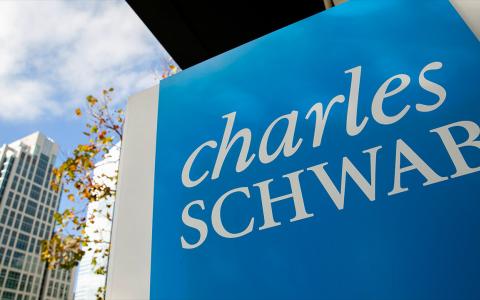
Charles Schwab's bond portfolio, a critical component of its financial structure, encountered an increase in unrealized losses, reaching $19.4 billion in the third quarter due to rising interest rates. This escalation, amounting to an additional $4 billion from the previous quarter, is a result of the bond market's significant downturn.
This development adds to Charles Schwab's challenges this year, notably in its portfolio of mortgage securities. The third-quarter losses in its held-to-maturity (HTM) portfolio are notably substantial relative to its capital compared to other major financial institutions. These losses also signify a missed investment opportunity, given the modest 2% yield on the HTM bond portfolios, potentially impacting returns for the foreseeable future.
The $19.4 billion loss is recorded in a U.S. agency mortgage securities portfolio with a $162 billion face value, as per the company's 10-Q report. Schwab classifies this portfolio as held to maturity, indicating no intention to sell these securities before maturity, which theoretically prevents these losses from becoming realized. This classification means that these unrealized losses do not directly affect Schwab's financial strength, according to accounting standards.
The HTM portfolio, predominantly composed of mortgage securities with maturities over 10 years, represented $173 billion in face value at 2022's end. The available-for-sale portfolio, in contrast, had a shorter average maturity. Schwab's stock has declined approximately 35% in 2023, indicating investor concern over these losses, despite the broader financial sector showing relative stability.
These unrealized losses are significant despite their non-realized nature, as they reflect both a real loss and a missed investment opportunity. With HTM bonds yielding less than 2%, Schwab and similar financial firms are locked into these low yields instead of investing in higher-yielding options currently available.
The paper losses surpass Schwab's average tangible equity of $9.7 billion in the third quarter, suggesting a potential risk to its financial strength if these losses were realized. However, applying a tax adjustment could reduce the loss figure to about $15 billion, maintaining positive tangible equity for Schwab's banking units.
Schwab assures that with its diverse liquidity sources and robust profitability, it is unlikely to need to sell its bond portfolio prematurely. The company anticipates the gradual diminution of these losses as the bonds approach maturity. Schwab's adjusted earnings per share dropped 13% in the first nine months of 2023, with a 30% decline in third-quarter profits.
Despite the challenges, Schwab continues to enjoy strong support from Wall Street analysts. Its total common equity averaged $28.3 billion in the third quarter, with tangible equity—a more conservative measure—averaging $9.7 billion.
The accounting of bond portfolios is complex, with different treatments for bonds classified as available for sale versus held to maturity. Schwab's $122 billion available-for-sale portfolio had unrealized losses of $11.8 billion as of September 30. The company's funding mix for its bond portfolio includes client cash sweep accounts, currently offering a 0.45% return.
A notable trend has been the outflow of deposits from Schwab as clients seek higher-yielding options. However, CFO Peter Crawford indicated a potential easing of these outflows and a return to sweep cash growth. Risks include prolonged high short-term interest rates and potential increases in cash sweep rates.
The rapid interest rate rises have significantly impacted the bond market, with Schwab, like other major banks, facing challenges due to investments in low-yield Treasury and agency debt securities in 2020 and 2021. Schwab's total bond portfolio, with an average yield of only 2%, falls short of current market rates.
In comparison, Bank of America and JPMorgan Chase have reported larger unrealized losses in their HTM portfolios but possess considerably more tangible common equity. Treasury rates have remained stable since the third quarter, suggesting minimal change in unrealized bond losses for Schwab and other banks. Schwab shares showed a slight increase after a previous decline, reflecting the ongoing market dynamics.



